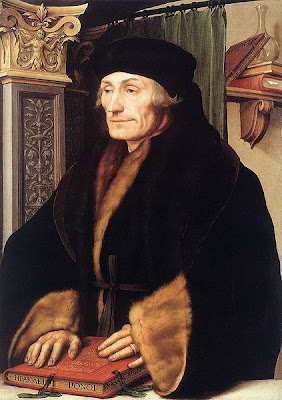 |
| La Belle Ferroniere - sure to attract a crowd |
In an effort to combat 'gallery rage' caused by over-crowding at major exhibitions, the National Gallery has decided to reduce visitor numbers for its
exhibition of work by Leonardo da Vinci, which starts in November...
 |
| Whistlejacket by Stubbs |
The National Gallery is more than an art collection: it is the modern equivalent of a medieval monastery, a place of constancy (and relative calm) at the heart of London. I've been visiting since my mother took me as a child and - bar the odd alteration like the addition of the Sainsbury Wing - the place is always the same. Walk through a certain set of doors and there is Stubbs' 'Whistlejacket', leaping against that strange opalescent background. Turn a corner and there are Gainsborough's daughters, still vainly pursuing that butterfly.
An excellent guide is still '100 Details from Pictures at the National Gallery', which was assembled by then-director Kenneth Clark in 1938, a year before the gallery was stripped and
its treasures sent off to a Welsh quarry for safe-keeping.
 |
| Erasmus - note inky fingers |
No doubt everyone has their favourite pictures and their favourite routes through the building. My tastes have changed slightly over the years but when I jotted down some highlights after a recent visit they were mostly familiar: Cranach's Venus, a Christ of El Greco, Degas' women rather than Renoir's, Duccio's Virgin... Increasingly I find the giant, boldly coloured paintings of the high Renaissance too intense. Give me Holbein's Erasmus and his inky fingers.
My absolute favourite picture is currently hidden away behind a gilded altarpiece, in a dim room which you could easily mistake for a cupboard. It's a drawing, not a painting, and it isn't even finished. The other day I sat and stared at it for some time in the soothing dim light without being disturbed by a single soul.
 |
| The Burlington House Cartoon |
The cartoon of
'The Virgin and Child with St Anne and John the Baptist' (aka The Burlington House Cartoon) is assumed to be a study for a painting, made by Leonardo da Vinci at the very end of the 15th century. No painting survives, but this study is a work of great beauty. Where some historic artworks seem overly stylised - examples from the pages of an art history book - the sketch is simple and fresh. The marks made by the artist on the paper are clearly visible; we can see how the image was conjured from nothing with charcoal and chalk, and we can wonder at the dexterity of the artist's hand and at the sensitivity of his vision.
You can visit the Virgin and St Anne tomorrow. You don't need a ticket and there won't be a crowd.





3 comments:
I try to visit the national when I'm in London. It amazes me how quiet some of the rooms are, especially once you've put a bit of distance between yourself and the main entrance.
I agree, Holbein is simply amazing. His portraits: you feel like those people are standing right next to you. There are a few of his pictures around the corner in the portait gallery too.
Have you visited the Lenkiewicz exhibition at the RWA yet? You must. There are many echoes back to the old masters, and the feeling you get in the national gallery.
Will go to Lenkiewicz - thanks for the tip
Post a Comment